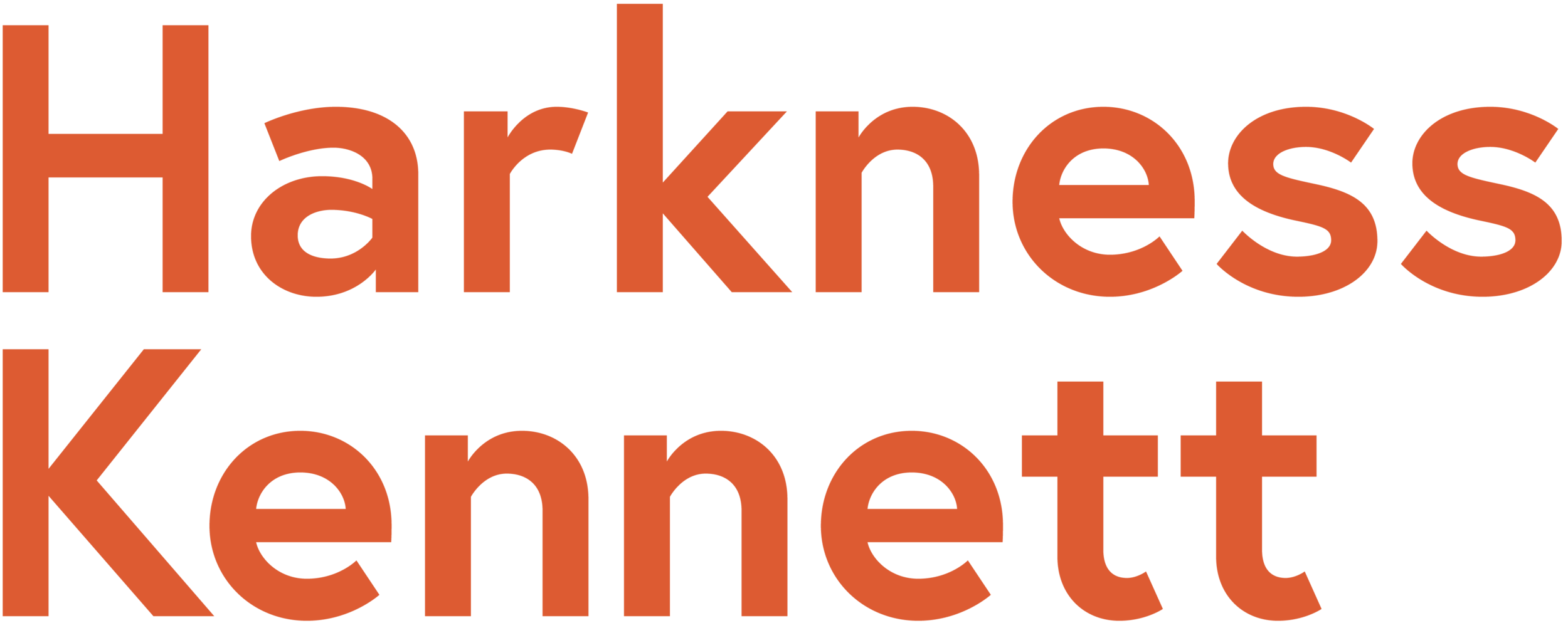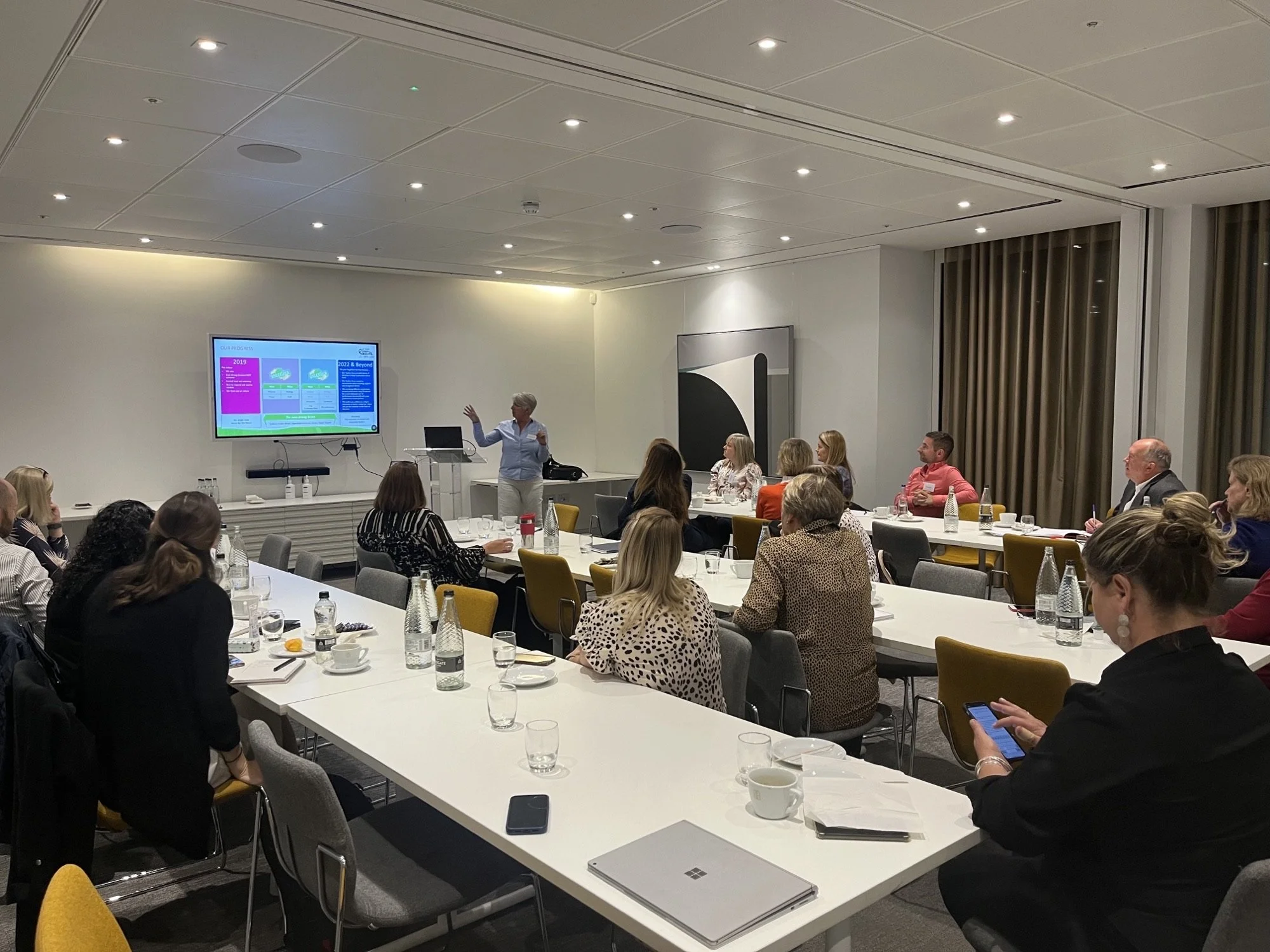The Internal Communicator's Guide to ESG
We were delighted to get together with some of our network last week for a breakfast session on the role of IC professionals in supporting ESG. Huge thanks to our client, Hyve for hosting us in their fabulous Paddington offices!
Suzanne Clarkson, our most recent addition to the HarknessKennett Associate team, kicked off the session. Suzanne has many years’ experience in communications, working for a variety of brands including Bupa and Legal & General.
Suzanne began by sharing some recently commissioned research demonstrating that employee wellbeing is fast becoming the primary focus for the ‘S’ in ESG strategy for most employers. The research highlighted that 92% of leaders will focus on the ‘S’ in ESG pillar in the coming year. The majority (57%), want more attention paid to employee wellbeing as part of S in ESG strategy.
The research also helped evidence an important disconnect. So, while the focus to date for most employers has been on “fixing the individual” (wellbeing apps, resilience training, mental health first aiders etc.) there’s a growing understanding that this only works if there’s also a focus on fixing work (culture, belonging, employee experience). And while the research found that the majority of leaders want ‘S’ in ESG strategy to focus on employee wellbeing, only 4 in 10 say culture, belonging and employee experience form part of those considerations right now.
Suzanne highlights that getting the wellbeing aspect right is really important, because data shows it has implications for employee recruitment, retention and productivity, and an associated impact on all other stakeholders that are important to ESG strategy; customers, communities, supply chains and, of course, shareholders.
But why does ESG belong with internal communications?
Suzanne explained that to date the business focus, when looking at ways to inform ESG strategy, has largely been on external factors and influences outside the organisation and not on the actual experiences and interests of their employees. She said that internal communication professionals have a crucial role in providing the bridge between leaders and employees, to ensure that ESG strategy is informed by employee voice (and not only from an annual engagement/satisfaction survey). This endorses the evolving role of IC to support from the bottom-up with regards to culture, belonging and employee experience, alongside its traditional top-down role, which is about creating alignment around vision, purpose and strategy.
What IC practitioners need to know about the ‘S’ and how to emotionally engage leaders in it
Suzanne explained that the traditional focus of the S in ESG was on making the ‘world’ a better place (community work etc). Now the attention is also on making where you ‘work’ a better place. This comes from a growing appreciation that financial performance is no longer the most important factor in business success, i.e., get the employee experience right and other indicators will follow - such as the ability to attract and retain talent, improved individual performance and ultimately better stock market performance.
How to emotionally engage employees in ESG
Suzanne pointed out that it’s well evidenced that employee emotional connection – or engagement – with an organisation is supported by employees genuinely having a voice; contributing and helping shape the things that make their organisation distinctive (including ESG & wellbeing). She stressed that this is about employees genuinely ‘experiencing’ ESG and wellbeing (not just being told), getting behind it and maybe even advocating for it themselves.
How (& why) to inform ESG through employee voice
Suzanne shared that employee engagement / satisfactions surveys are being leant on heavily as a way to include ‘employee voice’ in ESG strategy, but are limited in their ability to inform on actual experience and underlying drivers. She shared some interesting facts from the new research:
The majority (61%) of senior leaders say they use employee insights to help inform ESG strategy (nearly a quarter say employee interests aren’t reflected in their ESG strategy)
Of those 61%…employee engagement and satisfaction surveys represent the main insight gathering tool used
On the perceived purpose of employee voice, the majority (59%) of senior leaders saw it as ‘a channel to raise workforce concerns’
Just 4 in 10 (42%) saw employee voice in terms of ‘contribution and challenge to board level decision making’
Lastly, Suzanne wrapped up her presentation with some top tips and takeaways, for IC pros to help bridge the gap between leaders and employees. In turn, helping support culture, belonging, employee experience. Some of her top tips included:
Shadow different functions and get under the skin of the business – what’s the current employee wellbeing commitment as part of ESG?
Take a look at the latest engagement/satisfaction survey with S in ESG/ wellbeing commitment in mind – any problem areas?
Understand your audience deeply. Take a look under those wellbeing engagement problem areas through regular conversations, informal focus groups etc – what are the underlying drivers?
Share these insights with those senior leaders with sustainability responsibility
Provide appropriate recommendations, (i.e., perhaps kicking off a more formal project to: ensure employee voice better informs ESG/ wellbeing strategy etc).
If you’re interested to hear more on Suzanne’s presentation or find out more detail on the commissioned research she talked about please contact Tanya.McClelland@Harknesskennett.com
Nikki Griffiths, Hyve Group’s Communication and ESG Director, was the second speaker and shared how social impact is driving broader ESG engagement at Hyve.
Nikki talked about why ESG lies within her remit as Director of Communications – ‘as communicators we have great emotional intelligence, and this is absolutely one of the key skills needed to work on the ESG strategy’.
Nikki shared how Hyve has taken everything ESG offline, making it ‘all in the room’ through a series of events, social get togethers and celebrations of diversity, and that by getting peoples’ voices heard they’ve generated real success.
She then spoke about their ‘S’ strategies and how they engage people in them:
Through community engagement:
Partnering with ‘Making the leap’ – a social mobility charity
Through their newsletter, offering volunteering opportunities and case studies
Their pledge to invest profits in community projects
Global Hyve volunteering days and app launch
Through diversity and inclusion:
Partnering with event teams to address inclusion in the sectors they serve
Publication of a best practice blueprint, ongoing series of focus groups and conversations
Launched two working groups so far with more to come
Dedicated comms support
Inclusion calendar to drive conversations and learning
Events, talks, trivia, newsletters, blogs, and social media
Nikki told us that their social impact strategies have been a gateway to engaging colleagues with their wider ESG vision.
She then shared with us the results they are seeing through all their efforts:
A huge upturn in employer brand
Significantly above average eNPS – satisfaction, pride, and inclusion
Empowered colleagues, taking action – inside the business and at their events
A truly inclusive culture, linked to wellbeing, mental health, and performance.
Nikki wrapped up her presentation sharing how internal communications can support ESG, through:
Narrative – make it emotive and tell the story
Conversation – talk about it, a lot, and build momentum
Education – host events and talks to help people learn
Engagement – get people thinking and incorporate their opinions
Advocacy – empower people and give them the confidence to get involved, make it everyone’s responsibility
Signalling – tell everyone outside your business about your values and your work on social impact.
If you’d like to know more about what we’re doing in ESG, our recent research or like to have a conversation please do get in touch. We’d love to hear from you.
Published by Tanya

































